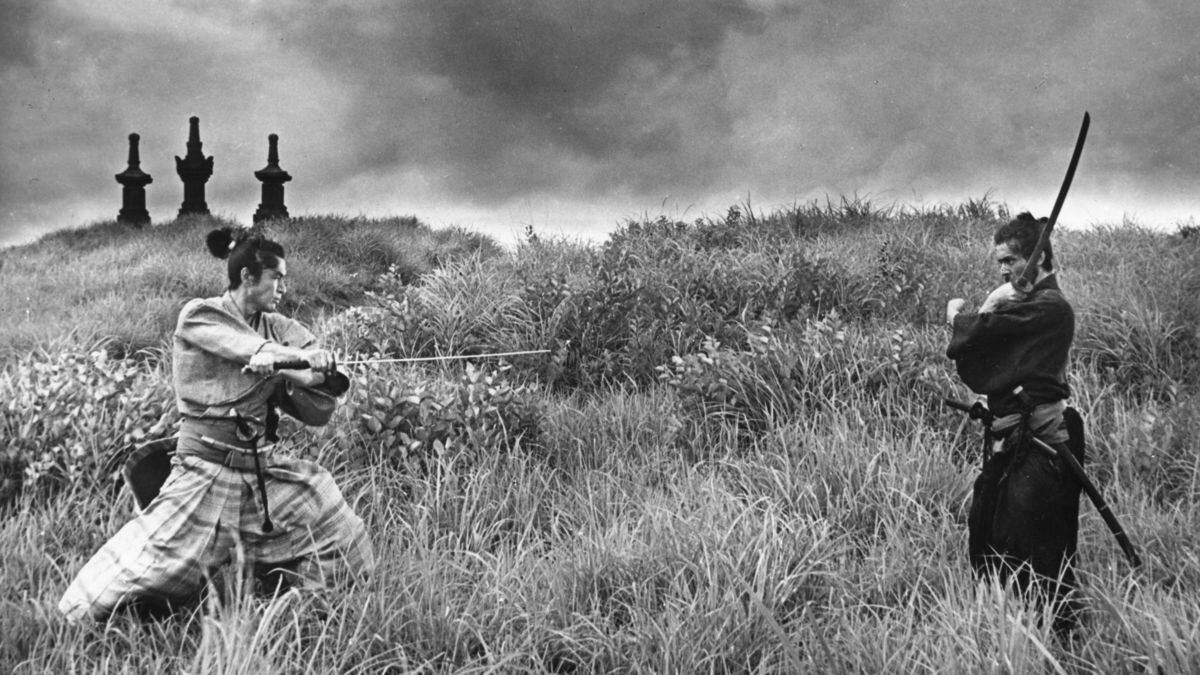Review: Harakiri
Harakiri is carefully placed in early-seventeenth-century Japan, but unlike so many other pieces of historical fiction, Masaki Kobayashi doesn’t use the setting as a lavish prop. Behind the period costumes and dated customs, the film is full of quiet intensity, and its critiques on custom and humanity cut sharply through the elegantly crafted shots. Harakiri begins in medias res with a destitute ronin seeking permission of the Daimyo’s senior counselor to commit ritual suicide in the courtyard of the palace. Seeking to dissuade him, the counselor tells him the gruesome tale of a young and desperate samurai who, requesting to commit seppuku in the hopes of gaining alms while keeping his life, was forced to disembowel himself with his bamboo blade. Harakiri burns slowly in its early scenes with expert pacing, tightly constructed scenes, and a gradually rising tension. The opening of the movie plays as acute psychological drama and it isn’t certain whether the fuse will die out or ignite in stunning conflagration. Like the samurai code it skewers, every turn is masked by a facade that belies its true intentions.
Filmed in 1962, the black and white scenes of Harakiri are full of sharp contrasts and stark figures. The camera’s movement is subtle, but highly effective. The cinematography has no visible flourishes, but it consistently directs the viewer’s gaze forward as the film’s momentum builds and its pulse quickens. Almost all of the scenes are carefully composed, and some are so vivid they demand to be seen more carefully than the pace of the film allows. Harakiri’s beautiful compositions and deliberate pacing mask its restless, thrashing core.
Perhaps most surprising about Harakiri is Kobayashi’s thematic range. Scenes of domestic happiness are told with the same weight and sincerity as those filled with violence and despair. Rather than resting the emotion of the film on the back of a historical tragedy or contrived melodrama, Harakiri is grounded in its careful storytelling and attention to emotion. As much attention is given to Harakiri’s well-choreographed fight scenes as to its flashbacks to family life, which, far from the expected rose-tinted montages, mine the anxieties and joys of daily life to form layered and engaging characters. The film hits most of the expectations of the genre, but it easily transcends its presumed limits with sincerity and substance.
The personal frame of the film, which never leaves its core cast of characters, does little to contain its gaze, which looks outwards with unflinching indignation. Harakiri hinges on the gaping disconnect between the idealized perception of a code of honor and the routine tragedy, hypocrisy, and callousness that necessarily result from its implementation. The absurdity of a flat abstraction being forced upon the complex and messy nature of daily life is both wry and deeply terrifying. Harakiri, far from getting lost in the past, deftly uses it to speak to the present with precision and power.
